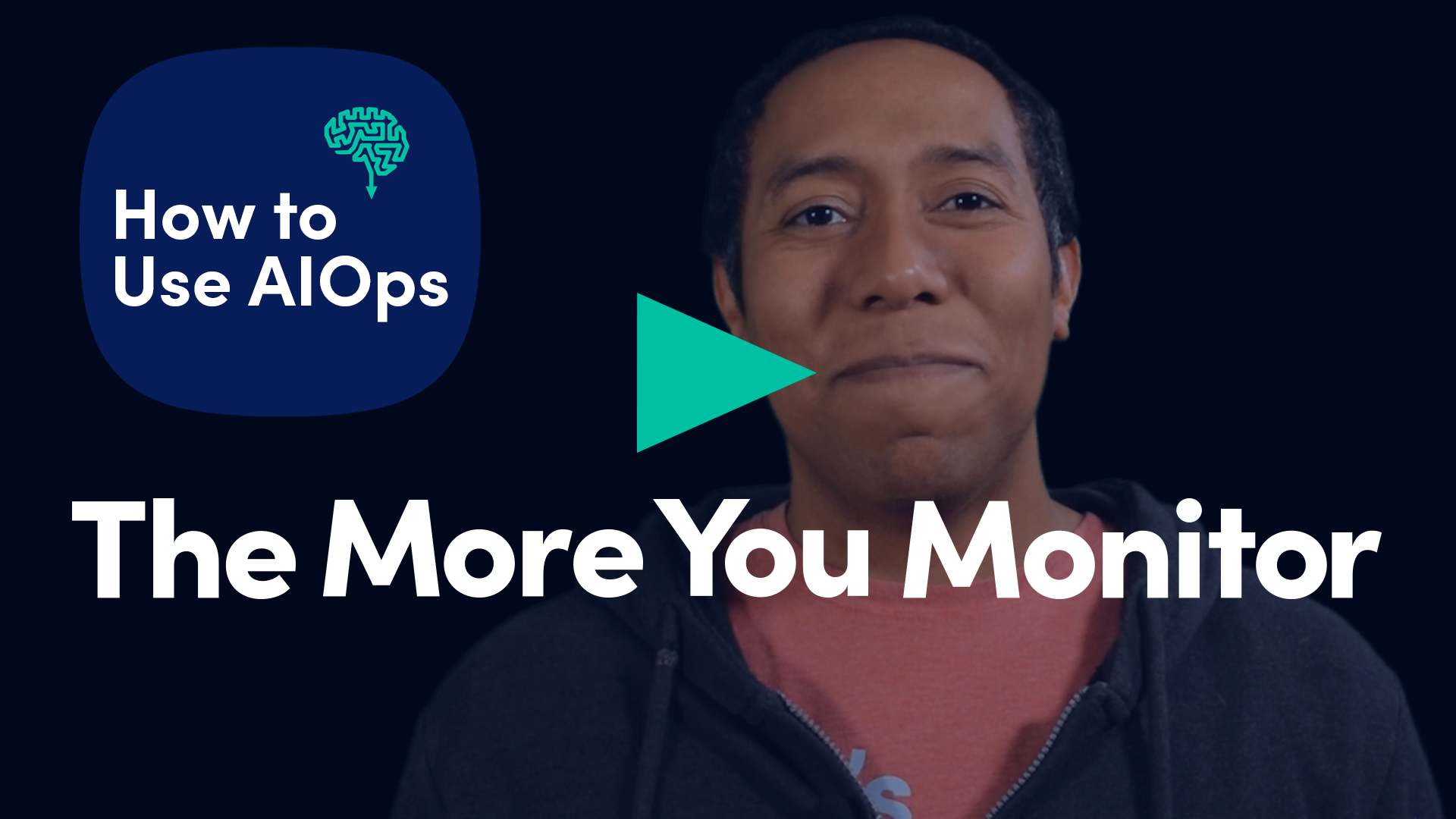In this episode of The More You Monitor Lead Sales Engineer, Dondy Aponte, lays out how AIOps for monitoring can help to process large volumes of data to keep you informed and ahead of any issues that may arise. With dynamic thresholds, root cause analysis, automated anomaly detection and predictive forecasting you’ll be equipped with the tools to reduce manual efforts and keep your infrastructures and systems online and performing.
Video Transcription
Thanks for joining me for this episode of The More You Monitor. I’m Dondy Aponte, a Lead Sales Engineer here at LogicMonitor. Today, we’ll be talking more about AIOps and the benefits AI can bring to ITOps, DevOps and SRE teams in the form of an early warning system. And AIOps early warning system may sound complicated, but it’s actually straightforward.
Modern observability platforms like LogicMonitor contain a set of features that when used together form a system that can predict issues before they occur and prevent IT downtime within today’s modern IT environments. That contain a mix of cloud, on-premise and containerized infrastructure.
For any AIOps early warning system to be truly effective, it needs to contain the following. Dynamic thresholds, algorithmic root cause analysis, automated anomaly detection and predictive forecasting. The heart of any early warning system is its AI and machine learning algorithms that support anomaly detection in any dataset such as IT infrastructure metrics or log data. This system sifts through massive amounts of monitor data.
The text normal performance ranges for technical and business metrics, and generates alerts based on anomalies. This makes a big difference in the volume of alerts displayed and helps teams avoid alert fatigue and surface anomalies sooner. This is important, considering 47% of organizations receive more than 50,000 alerts per month. Dynamic thresholds that set the bounds of an expected performance range for a particular data point save IT teams hours of administrative overhead spend on managing manual static thresholds. They provide a more effective way for teams to discover exceptions and modern ephemeral environments.
Automated root cause analysis is another key part of an AIOps early warning system. Root cause analysis relies on topology map relationships to determine the root cause of an incident that is impacting dependent resources. With root cause analysis, teams are able to ignore issues related to dependent resources and focus on solving for the root cause of the issue.
Last but not least, predictive demand of capacity forecasting enables ITOps, DevOps and SRE teams to predict to where systems are heading and what systems will require attention in the immediate future. Forecasting allows a team to determine when disc usage that is currently at 85% will hit 95% before it actually hits that value. The team can make decisions about what action, if any, they need to take today to prevent an issue in the future.
We’ve now walked through some of the features and benefits made possible by an AIOps early warning system. For more information on how AIOps can help power your organization’s digital transformation journey, download LogicMonitor’s latest AIOps e-book, Comprehensive AIOps for Monitoring. And keep an eye out for the next segment of our AIOps video series. I’m Dondy Aponte, signing off for LogicMonitor.

